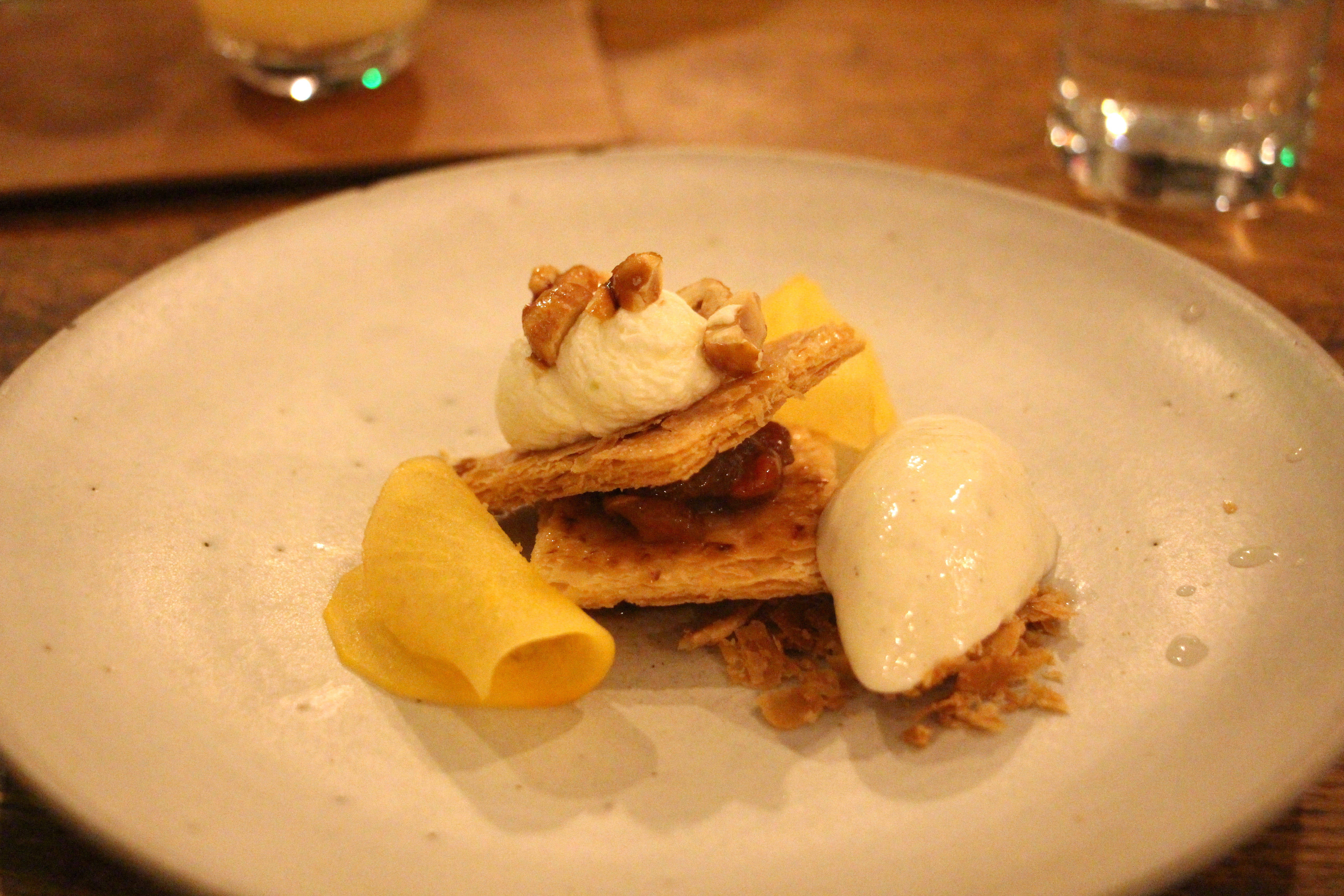When I was first working in French food media, I got the opportunity to interview a truly genius chef who told me, among other things, that one of the principal reasons that wine is so important in French cuisine is that it lends the acidity traditional dishes lack. This, of course, is kind of a chicken-and-egg scenario – did French cuisine grow up lacking acidity because the wine was always there? Does the presence of the wine mean chefs don’t seek to add acidity? But the fact remains: much traditional French food is indeed improved by wine; without it, it can be stodgy and far too heavy.
But contemporary French food is evolving and changing. It’s taking on nuances and characteristics from other cuisines around the world, including – quite often, in fact – Japanese. I was already aware of this tendency before visiting Japan in April, but after tasting some traditional kaiseki menus, I noticed it more and more. Case in point? Dersou.
Chef Taku Sekine worked for Alain Ducasse in Tokyo before creating the original experience at this restaurant – a Japanese-accented tasting menu paired with craft cocktails.
Our five-course dinner started with a very Japanese amuse bouche of fish broth with lemongrass and an almost beefy richness.
This scallop ceviche followed: fresh and light, it was a delicious way to begin the meal.
It was paired with a gin and sake cocktail with Granny Smith apple and dill. It boasted a phenomenal brightness and helped the brininess of the scallop and the earthiness of the soy sauce with which it was seasoned to come through.
Next, we dove into my favorite dish of the night: a smoked veal tartare served with apple compote and cauliflower two ways: as a cream and as a snow. My dining companion found the cauliflower snow to be superfluous, and while I kind of agree, I still loved the smokiness of this dish.
I also thought it paired perfectly with this slightly anisey cocktail of jenever, sherry, fino, and coriander.
Next up was a fish dish – what seems to have become an essential element of any tasting menu in Paris. The fish itself was perfectly cooked; the grapefruit reduction was interesting but a bit overpowering; the celery root mousse was fine. But for a 95-euro tasting menu, I wanted something a little bit more… exciting.
It didn’t help that it was paired with my least favorite cocktail of the night: celeriac, hazelnut, verjus, and madeira.
The pigeon dish that followed was certainly flavorful and was glazed with an impeccable jus. That said, it was oddly unwieldy to eat.
It was, however, paired with my favorite cocktail of the night: oloroso oxidative wine with sesame and orange reduction. I sang the praises of this funky cocktail to anyone who would listen – and if not for the two-week in-house maturation, I’d be trying to make it at home.
Dessert – unsurprisingly for the season – was persimmon; I haven’t been able to escape it fall and winter menus this year in Paris. Don’t get me wrong – I like persimmon. I just have yet to be wowed anywhere.
In this case, the fruit was paired with a delicious rice pudding ice cream, caramelized nuts, and one of my favorite flaky puff pastries I’ve found thus far in Paris, which made it stand out from other declensions of the fruit I’ve encountered so far this year.
And of course, the chestnut-scented cocktail with rum, madeira, and coffee rounded things out nicely.
I’m definitely a wine fan, but I’m no stranger to pairing dishes with beer. Cocktails are not usually in my wheelhouse – and cocktail pairings even less so – but the experience at Dersou, with its Japanese accents and intriguing, savory flavors, is certainly one I’d repeat.
Dersou - 21 Rue Saint-Nicolas, 75012 Paris











